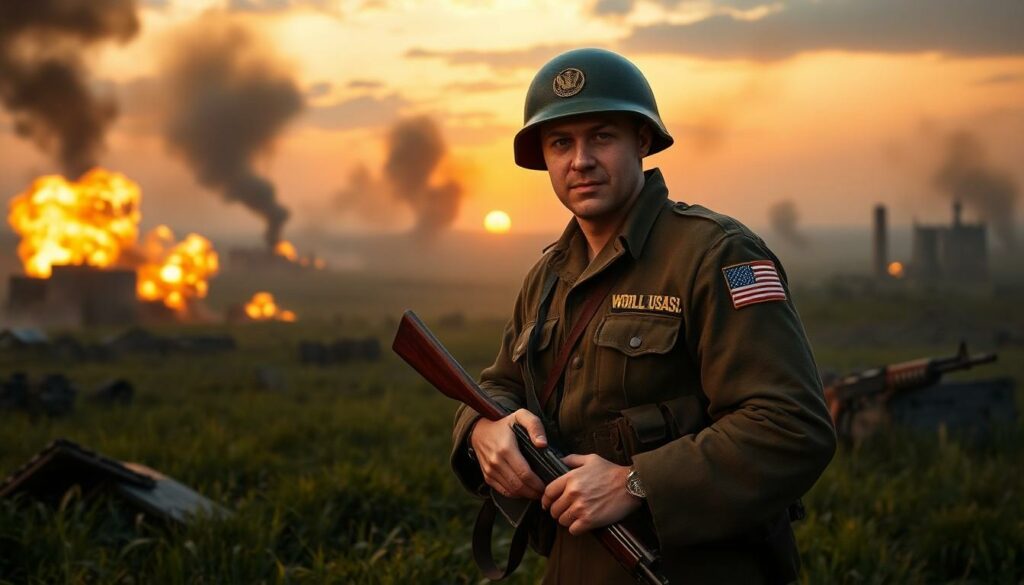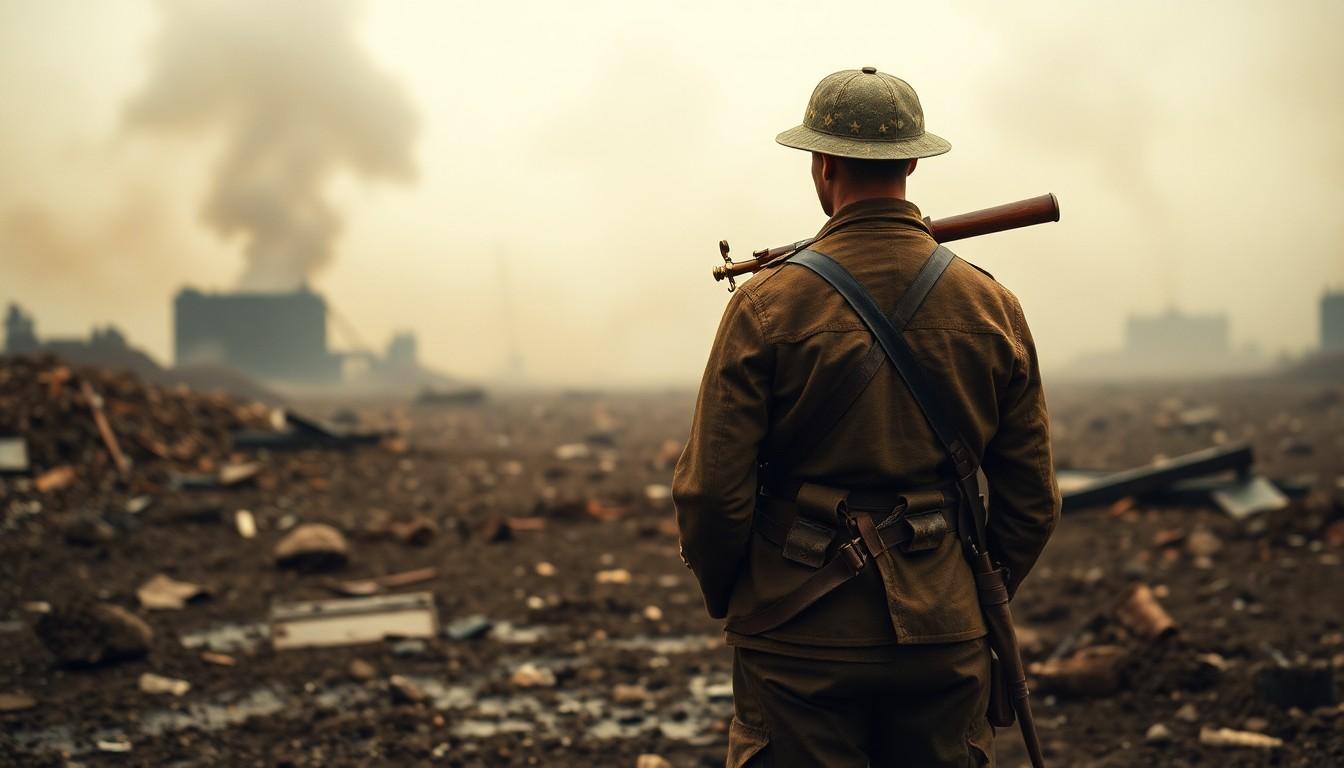Table of Contents
ToggleIn the epic showdown of Battlefield 1 and Battlefield 5, gamers find themselves caught in a historical tug-of-war. One transports players to the trenches of World War I, while the other catapults them into the chaos of World War II. It’s like choosing between a vintage wine and a craft beer—both have their charm, but which one truly packs a punch?
Overview of Battlefield Series
The Battlefield series has captivated players since its inception in 2002. Each installment focuses on different historical conflicts, creating immersive experiences through gameplay mechanics and visual storytelling. Players can expect large-scale warfare, destructible environments, and a strong emphasis on teamwork across the franchise.
Battlefield 1, released in 2016, emphasizes World War I’s unique challenges. Multiplayer maps depict vast landscapes ranging from muddy trenches to desolate deserts. Unique classes and vehicles, like biplanes and tanks, enrich gameplay strategies. Its storytelling highlights the human experience behind the war, fostering emotional connections.
On the other hand, Battlefield 5 debuted in 2018, transporting players to the chaos of World War II. It introduces new mechanics, such as fortifications and combined arms gameplay. Diverse environments include urban warfare in Rotterdam and the frozen landscapes of Norway. Battlefield 5 also focuses on untold stories, bringing attention to lesser-known events during the war.
Both titles cater to varying play styles. Battlefield 1 encourages players to adopt adaptive strategies and engage in close combat scenarios. Battlefield 5 rewards players who leverage teamwork, utilizing vehicles for support and dominance. The community surrounding each game fosters competitive play, enhancing the overall experience.
Each title also features a range of game modes, from Conquest to Team Deathmatch. These modes, designed for varying preferences, create engaging gameplay sessions. With seasonal updates and expansions, both Battlefield 1 and Battlefield 5 continue to evolve, keeping their communities active and engaged. Through innovative gameplay and rich historical contexts, these games contribute significantly to the Battlefield legacy.
Battlefield 1
Battlefield 1 transports players to the turbulent era of World War I, immersing them in a rich narrative steeped in historical accuracy. This title emphasizes the harrowing experiences of soldiers, showcasing their struggles through compelling storylines.
Setting and Storyline
The setting of Battlefield 1 encapsulates diverse frontlines across various nations. Players explore locations such as the Western Front, the Italian Alps, and the Middle East. Each campaign reflects distinct perspectives, from the grind of trench warfare to the chaos of cavalry charges. Major characters, like the Bedouin warrior and the British tank commander, provide personal insights, enhancing emotional engagement. The narratives highlight not only the physical battles but also the human stories behind them, crafting a memorable gaming experience.
Gameplay Mechanics
Battlefield 1 introduces unique gameplay mechanics tailored to its historical context. Players choose from four classes: Assault, Medic, Support, and Scout, each offering specific roles on the battlefield. The game encourages adaptive strategies, requiring players to adjust tactics based on the evolving dynamics of combat. Vehicles play a crucial role, including tanks and aircraft, promoting large-scale battles. Teamwork remains essential, as players coordinate to capture objectives and utilize the environment for strategic advantages.
Graphics and Sound Design
The graphics in Battlefield 1 present stunning visuals that bring the Great War to life. Graphics showcase detailed environments, from ravaged towns to lush fields. Realistic weather effects and lighting enhance immersion. Sound design complements the visuals, featuring authentic weapon sounds and immersive battlefield audio. Players hear distant artillery fire, the clang of metal, and the roars of aircraft. Together, these elements create a visceral atmosphere, allowing gamers to experience the intensity of warfare.
Battlefield 5
Battlefield 5 immerses players in World War II, focusing on lesser-known events that shaped the era. This installment captures the chaos and complexity of the conflict, providing stories from multiple perspectives.
Setting and Storyline
Set across various fronts of World War II, the storyline emphasizes personal narratives of soldiers and civilians. Players explore unique campaigns, such as “War Stories,” which present diverse experiences. Attention to historical accuracy resonates throughout gameplay, engaging players in conflicts like the Norway campaign and the fall of France. Each story unfolds through dynamic characters, fostering emotional connections and deeper understanding of the war’s impact.
Gameplay Mechanics
Gameplay mechanics in Battlefield 5 introduce a range of innovative features. Players benefit from extensive customization options for classes, weapons, and vehicles. Teamwork and coordination hold significant importance, as battles require players to communicate effectively. The game encourages strategic use of environmental cover and destructible elements to gain an advantage. Modes like Grand Operations enhance the multiplayer experience, allowing large-scale battles with unique objectives that evolve over multiple rounds.
Graphics and Sound Design
Graphics and sound design elevate the immersive experience in Battlefield 5. The Frostbite engine delivers stunning visuals and realistic environments, making each battlefield come alive. Weather effects and time of day advancements create a dynamic atmosphere that shifts during gameplay. Detailed soundscapes enhance immersion, from the roar of tanks to the crackle of gunfire. Players experience a captivating mix of visuals and audio that fully engages them in the unfolding action.
Comparing Gameplay Experience
The gameplay experience in Battlefield 1 and Battlefield 5 presents unique features that enhance player engagement and enjoyment.
Multiplayer Features
Battlefield 1 emphasizes intense, close-quarters combat, encouraging players to adapt their strategies on vast maps. Teamwork plays a vital role in this installment, with modes like Operations offering dynamic objectives that create immersive battles. In contrast, Battlefield 5 focuses on large-scale warfare and evolving gameplay mechanics. Players benefit from extensive class and weapon customization options, fostering diverse tactical approaches. Grand Operations mode enhances battlefield experiences through collaborative efforts, providing expansive scenarios that change over time. Both games encourage player interaction, yet their approaches to multiplayer combat highlight different aspects of teamwork and strategy.
Single-Player Campaign
Battlefield 1 offers a raw portrayal of World War I through its War Stories, featuring gripping narratives that showcase individual soldier experiences. Each story highlights distinct perspectives, capturing the emotional weight of the conflict. Alternatively, Battlefield 5 dives into lesser-known events of World War II, presenting personal narratives in its War Stories. The campaign format intertwines player experiences with historical events, enhancing engagement through storytelling. While Battlefield 1 focuses on significant battles, Battlefield 5 sheds light on the unseen struggles of war, providing a diverse and impactful single-player experience.
Community Reception
Players have shared mixed feelings about both titles, reflecting varying preferences and experiences within the Battlefield community. Enthusiasm for Battlefield 1’s historical accuracy and emotional storytelling shines through in numerous reviews. Gamers appreciate its immersive atmospheres, dynamic maps, and teamwork-based gameplay. In contrast, feedback for Battlefield 5 often highlights its innovative mechanics and strong emphasis on customization options. Many players also find its focus on lesser-known World War II events refreshing, though some lament the perceived disconnect from the franchise’s roots.
Player Reviews
Battlefield 1 generally receives praise for its stunning visuals and engaging narratives, with many players finding its War Stories compelling. From emotional character arcs to intense multiplayer scenarios, gamers appreciate the different perspectives offered. Battlefield 5 garners attention as well, particularly for its customization and evolving gameplay modes. Reviewers frequently mention the significant improvements in teamwork dynamics, which can transform gameplay experiences. Despite that, criticisms often arise regarding balance issues in multiplayer and the need for more engaging single-player content.
Critic Ratings
Critics largely favor Battlefield 1, often lauding its historical setting and intense multiplayer engagements. Several reviews commend its commitment to authenticity, which captures the essence of World War I’s brutal experience. On the other hand, Battlefield 5 garners a mix of positive and negative reviews, with some critics celebrating its innovative features, while others express disappointment over perceived glitches and server issues. Critics commonly note that while Battlefield 5 has strengths in creativity and visual design, it lacks the same emotional depth found in its predecessor. Overall, these ratings reflect a community divided, each game appealing to different player sensibilities.
Conclusion
Choosing between Battlefield 1 and Battlefield 5 ultimately comes down to personal preference. Each game offers a unique lens on its respective war, with Battlefield 1 providing a gritty look at World War I and Battlefield 5 exploring the often-overlooked narratives of World War II.
Players who appreciate historical accuracy and emotional storytelling may lean towards Battlefield 1, while those seeking innovative gameplay mechanics and extensive customization might find Battlefield 5 more appealing. Both titles contribute significantly to the Battlefield legacy, fostering vibrant communities and ongoing discussions about their strengths and weaknesses.
Ultimately, the decision reflects not just a preference for gameplay style but also an appreciation for the rich tapestry of history each game represents.








